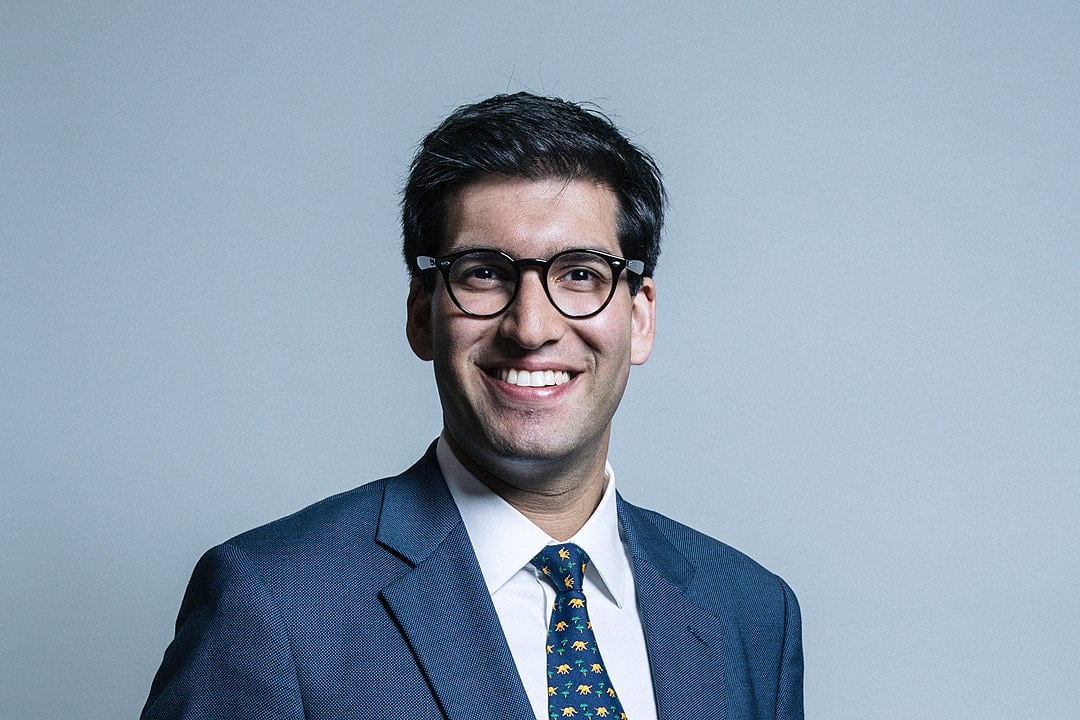
Ranil Jayawardena took over as Secretary of State for Environment, Food and Rural Affairs following the election of Liz Truss as prime minister. Image: Chris McAndrew (WikiMedia).
The solar sector has hit back after reports emerged that environmental secretary Ranil Jayawardena is looking to redefine land categories to make the development of ground-mount assets harder.
Initially reported in the Guardian, Jayawardena is said to be considering extending the definition of Best and Most Versatile (BMV) land to Grade 3B.
Currently the majority of solar farms are developed on land that is designated as 3B within the Agricultural Land Classification (ACL) scheme.
The ACL grades land from 1-5, with a number of subsections within these. Grade 1 is considered excellent quality agricultural land, best for growing fruit and salad crops for example, whilst Grade 5 is very poor quality agricultural land, suitable mainly for just permanent pasture or rough grazing.
Solar farms are not built on land considered BMV within the ALC, and instead on land that falls into Grade 3B – denoting moderate quality agricultural land – or below.
The extension of the BMV categorisation to 3B would effectively ban solar from around 41% of land in England, or about 58% of agricultural land.
Comparatively, if every solar farm currently put forward was built, this would still account for less than 0.4% of the UK’s agricultural land and 0.28% of the UK’s entire land area, according to Solar Energy UK.
And even if five times as many solar farms were built as the country pushes to increase the share of renewables within the energy mix, they would still only occupy less than 0.3% of UK land – less than half that currently taken up by golf courses.
“The UK solar sector is alarmed by attempts to put major planning rules in the way of cheap, homegrown energy,” said Solar Energy UK CEO Chris Hewett.
“Solar power is the answer to so many needs and policy demands: it will cut energy bills, deliver energy security, boost growth and help rural economies. Ranil Jayawardena’s opposition to solar farms must surely make him part of the 'anti-growth coalition'.”
BREAKING – rumours of UK Govt plan to ban solar from farmland. @ranil is jeopardising over £20bn of private investment into cheap, clean, home-grown energy. It simply makes no economic sense and @SolarEnergyUK_ is looking for the Govt to rule this out ASAP https://t.co/62hmxk7Sof
— Chris Hewett (@chrisjhewett) October 10, 2022
Speaking to Solar Power Portal, a Defra spokesperson said: “The environment, farming and economic growth go hand-in-hand, and as stated in the Growth Plan, we are committed to increasing our long-term energy security and strengthening the UK’s food security.
“That’s why we will be looking at the frameworks for regulation, innovation and investment that impact farmers and land managers to make sure that our policies are best placed to boost food production, increase resilience, drive growth and protect the environment.”
The supposed redefinition of BMV follows criticism launched at the solar sector in recent months that sought to put it in opposition to food security. This includes comments made by Jayawardena’s predecessor George Eustice at an Environmental Audit Committee meeting in June.
At the time, he pointed to guidance issued by the Department of Environment, Food and Rural Affairs, together with the Ministry of Housing, Communities and Local Government (MHCLG) to local authorities in 2015 which “created a strong presumption against solar farms on Best and Most Versatile land, and that is classified in law as grade 3B or above.”
“We’re conscious that there have been quite a few big schemes in recent months or over the last 12 months, where planning authorities seem to have either forgotten or started to disregard that advice,” continued Eustice at the Committee meeting.
“I don’t think new guidance was issued by MHCLG, but if… they don’t understand the legal definition of BMV land we will take that up with them. But 3B constitutes BMV land.”
Eustice’s comments in the meeting were met by criticism from the solar sector, which highlighted that – as mentioned above in this article – BMV land is that classified as 3A or above.
In September, Eustice wrote to Philip Dunne, chair of the Environmental Audit Committee, clarifying that the policy stance issued by the chief planning officer in 2015 did not make reference to the BMV land.
Government has now joined the anti-growth coalition. https://t.co/1oveskpQf1
— Sam Freedman (@Samfr) October 10, 2022
As well as Eustice’s error, both candidates in the recent Conservative leadership race attacked solar for its land use, including now prime minister Liz Truss infamously dubbing the technology “paraphernalia”.
Redefining BMV to include 3B land would effectively tilt the planning process against solar, one of the cheapest and greenest sources of electricity open to Britain. For example, solar and wind are currently nine times cheaper than gas.
As such, it is both vital to energy security and transitioning to net zero to continue to rollout solar. Far from being a hindrance to food security, it can directly benefit it, as the single biggest threat to Britain’s food security is climate change.
Solar has repeatedly been shown to be one of the most popular sources of energy, with a survey from the Department for Business Energy and Industrial Strategy indicating that over 80% of the population support solar and just 3% are actually in opposition to it, making it the most popular renewable technology.
Similarly, a YouGov survey of Conservative Party members found that 73% supported solar, including ground-mounted solar farms.
The rapid growth of solar could allow it to supply 17% of the UK’s annual electricity needs by 2035, as well as support 60,000 jobs.
Solar Power Portal reached out to Defra, but it had not issued a response by the time of publication, whilst BEIS and the Department for Levelling Up declined to comment at this stage.

